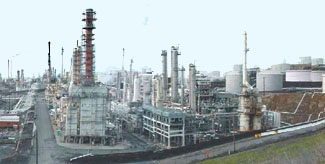Bacillus anthracis: Difference between revisions
imported>Kahtan M Alsaedi No edit summary |
imported>Kahtan M Alsaedi |
||
| Line 27: | Line 27: | ||
==Ecology== | ==Ecology== | ||
Describe any interactions with other organisms (included eukaryotes), contributions to the environment, effect on environment, etc. | Describe any interactions with other organisms (included eukaryotes), contributions to the environment, effect on environment, etc. | ||
Nearly all warm-blooded animals are vulnerable to anthrax. Some of anthrax victims are herbivores especially grazing animals such as cattle and sheep. Anthrax is also seen in demosticated animals such as horses, mules, goats and camels. Anthrax is not limited to just domesticated animals, its also seen in wild animals. On the other hand colded animals are not affected by anthrax at all. The reason for this is because Bacillus anthracis bacteria grows best at temperatures ranging from 77F to 104F. Animals whose body temperature does not fall with in the range will be immune to anthrax. A good example of an animal whose body temperature is above the permissible range for Bacillus anthracis and is thus immune to anthrax is a bird. | |||
==Pathology== | ==Pathology== | ||
Revision as of 14:51, 28 March 2008
Articles that lack this notice, including many Eduzendium ones, welcome your collaboration! |
Classification
Higher order taxa
Domain; Phylum; Class; Order; family [Others may be used. Use Tree of Life link to find]
Species
Description and significance
Describe the appearance, habitat, etc. of the organism, and why it is important enough to have its genome sequenced. Describe how and where it was isolated. Include a picture or two (with sources) if you can find them.
Genome structure
Describe the size and content of the genome. How many chromosomes? Circular or linear? Other interesting features? What is known about its sequence? Does it have any plasmids? Are they important to the organism's lifestyle?
Cell structure and metabolism
Describe any interesting features and/or cell structures; how it gains energy; what important molecules it produces.
Ecology
Describe any interactions with other organisms (included eukaryotes), contributions to the environment, effect on environment, etc. Nearly all warm-blooded animals are vulnerable to anthrax. Some of anthrax victims are herbivores especially grazing animals such as cattle and sheep. Anthrax is also seen in demosticated animals such as horses, mules, goats and camels. Anthrax is not limited to just domesticated animals, its also seen in wild animals. On the other hand colded animals are not affected by anthrax at all. The reason for this is because Bacillus anthracis bacteria grows best at temperatures ranging from 77F to 104F. Animals whose body temperature does not fall with in the range will be immune to anthrax. A good example of an animal whose body temperature is above the permissible range for Bacillus anthracis and is thus immune to anthrax is a bird.
Pathology
How does this organism cause disease? Human, animal, plant hosts? Virulence factors, as well as patient symptoms.
Application to Biotechnology
Does this organism produce any useful compounds or enzymes? What are they and how are they used?
Current Research
Enter summaries of the most recent research here--at least three required

